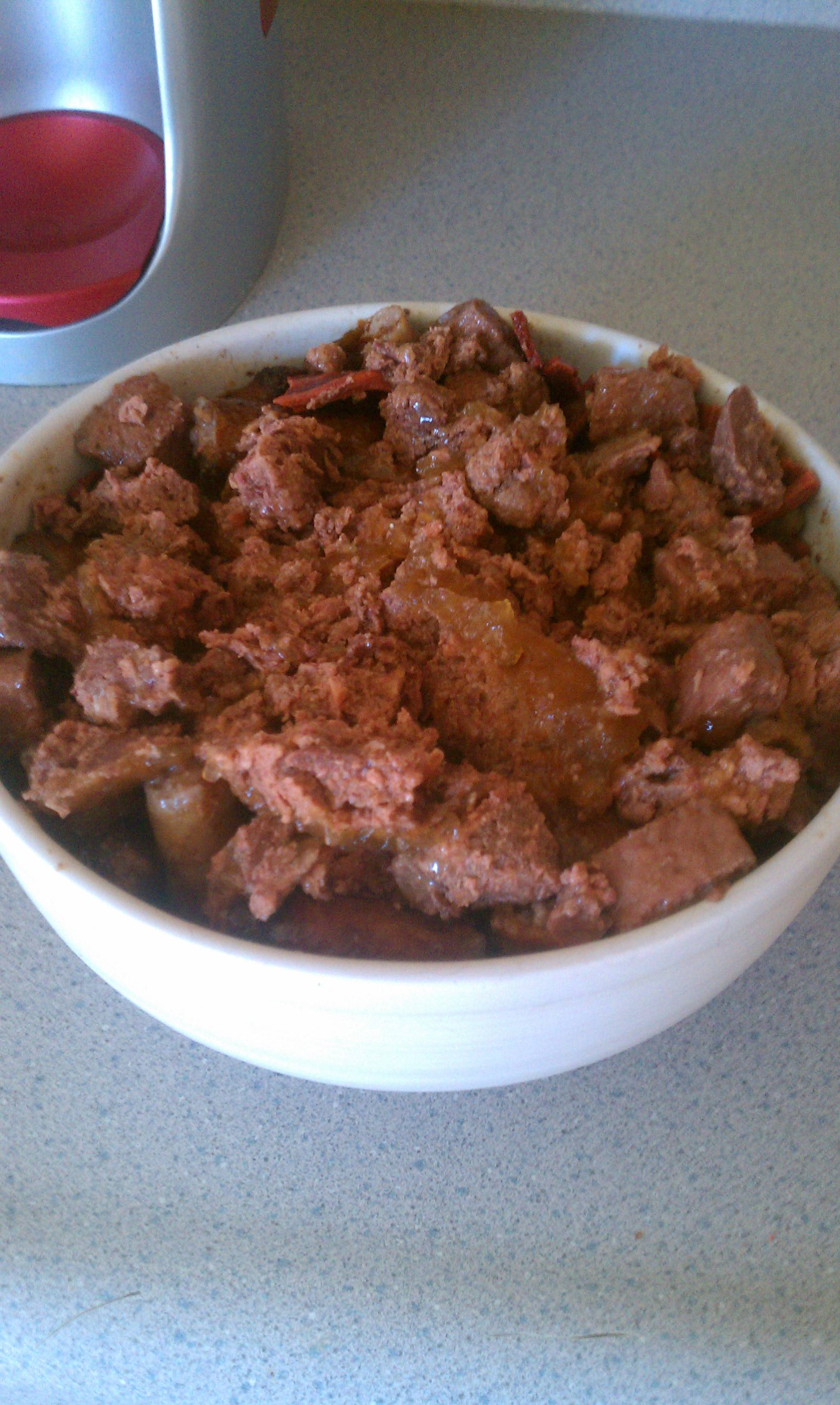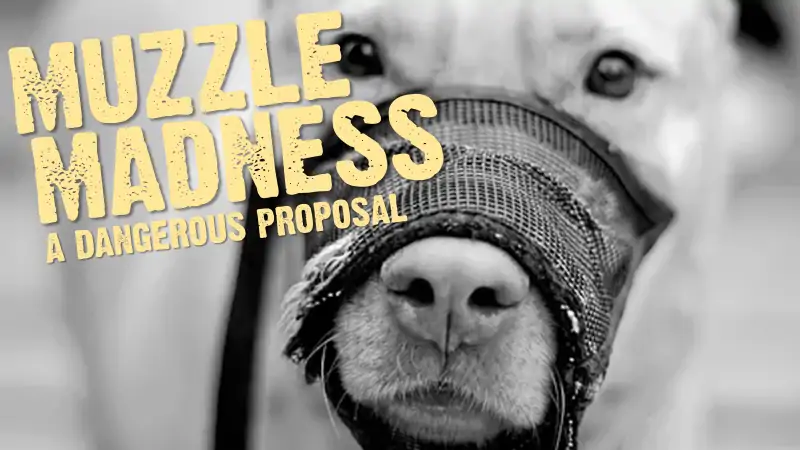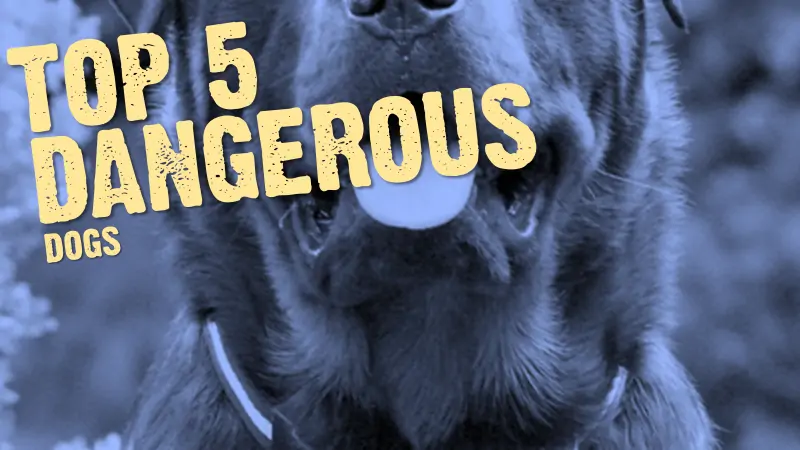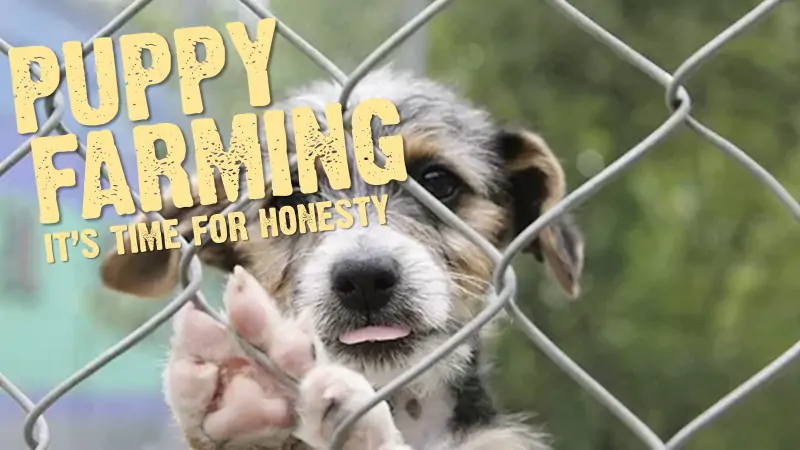On a Sunday evening in July 2009, I was using my computer and my 5 year old Samoyed Bundy came in shaking his head (he had left my room approximately 15 mins earlier). I thought he was bringing me the ball because he wanted to play. He was also pawing at his mouth, so I thought he must have something stuck in his mouth. I had a look but couldn’t see anything. I knew something was seriously wrong so I jumped in the car and raced to the nearest 24 hour vet as fast as I could with Bundy in the back, still acting strangely with his head.

Luckily, the roads were empty and there was no one waiting at the vet. As we were led into the examination room, Bundy collapsed on the floor and was trembling all over. I then had to go back to the waiting room while they attended to him in the back. After a wait, I was led to the back where Bundy was in a cage and flailing about uncontrollably, which was very distressing for both him and me. I understand the vet gave him a shot of pentobarbital to knock him out. After another wait, I eventually went home but, obviously, I couldn’t sleep.
The next day, when I visited him, he was lying on a bed with lots of tubes and machines attached. He was unconscious but his paws and face were still twitching. It was tearing me apart to see him like that but I stayed for a few hours and held his paw, because I didn’t think he was going to make it. I don’t think the vets were very optimistic either because he was developing asperatic pneumonia.
I visited him every day and stayed for a few hours but I realised that the nurses have other animals to look after and duties to perform so I didn’t want to get in their way by staying longer. The vets and nurses that treated him gave him the best of care and I’m very grateful.
He remained unconscious for 3 or 4 days which, I’m told, is not usual but not unheard of either. The vets there treated him with a cocktail of drugs to try to control his twitching. They recommended sending him to a specialist centre so, after about 5 days, I drove him in the back of my car. He was still unconscious so a vet nurse sat with him, assisting with the oxygen.
The vets at the specialist centre ran a multitude of generalised tests including MRI and spinal taps but the results were inconclusive. After a day or so, he started to come around, semi conscious, but still twitching. The next day I visited, he was finally awake and when he saw me he started to whine with all the energy his weak body could muster, he could barely move but he still wanted to lick me and it became very emotional for both of us. Within a week, he got more responsive and stronger every day and was then allowed home.
As Bundy is 5 years old, epileptic fits were a possibility but I’m told that they do not last for 3+ days and the MRI brain scan had ruled out a brain tumour.
The vets that treated him thought it was likely he had come into contact with a toxin that acted on his nervous system. I wracked my brains as to what that could be as I wanted answers. The day of the episode, we went for a walk (on lead) at about 5 pm then he was shut inside the house and had his food about 6pm. There was no access to the garden and there are no chemicals around the house.
The previous day, I had put a new tick collar on him and noticed a very strong smell coming from it. I assumed that this must be the cause of Bundy’s condition somehow so I didn’t put another back on him.
When he was back home, I was feeding him brand new packets of his usual dry dog food that he likes and has had for years but, before the first episode, I had bought a different brand of food just for a change and added this to his usual food in a container, one that he had never had before (not sure if I can say the brand name, for legal reasons, but possibly the biggest and most popular brand in the world and the name is something to do with a dog’s heritage). Anyway, after a few weeks of feeding him brand new usual food strait out of the packet, I went back to adding some of his previous food on top. Within that week, he had a serious case of diahorreoa but I thought that could just be down to the drugs he was on.
A few days later (coincidentally, again on a Sunday night and about 2 hours later in the evening than the first episode), I noticed Bundy looking at me strangely and his legs were shaking. I immediately knew what was wrong and I drove him down to the specialist centre where he was again in intensive care for a week or so.
He came home very weak but, today, over six months later he is fit and healthy apart from his legs sometimes shaking when he stands. Obviously, there appears to be some residual nerve damage.
The vets at the specialist centre ran more tests the second time but still nothing was remarkable.
The four different vets that treated him between the two veterinary clinics and both episodes suspected intoxication by organophosphates, metaldehyde, (slug bait) or mycotoxins.
It was after this second occurrence that I realised that this new brand of dog food was the only common factor in both these cases. Perhaps it was contaminated?
I contacted the company that makes the dog food and arranged for an approximate 1kg sample to be sent off (but unfortunately I didn’t have the bag and batch code). The sample I sent did have small amounts of Bundy’s usual dog food mixed in (other brand). I sent it like this because this new food was added on top of his old food in a container and I wanted to know if they would even notice or just throw it away but, surprisingly, they did notice. I think, because of this, they did not run any tests.
A guy qualified in veterinary science, and who works for the dog food company, dealing with complaints of this nature, sent me a letter saying he had contacted my vet and discussed the causes of ‘tremorgens’ (a group of mycotoxins). These have been associated with Blue cheese, walnuts and compost as well as others and it was unlikely that their product was responsible.
Fortunately, Bundy has not been fed or been near those stated substances.
When I leave the house Bundy stays inside and he is always walked on a lead, he only goes into the garden if I go into the garden and the last time I saw a slug was about 10 years ago so he has very little chance of ever coming across something I don’t know about.
After a few weeks, I contacted the company’s vet again for the results of the test. I understand the tests didn’t show up anything abnormal. I wasn’t surprised at the company’s response because no company is ever going to test their own product and say something is wrong with it. He suggested that it was just one of those unexplained things, which I would have believed for the first episode but it is too coincidental for the second.
I got a bit annoyed with this guy because the way he dismissed my reasoning seemed arrogant.
He said that because they hadn’t had any other complaints, there was obviously nothing wrong with the batch and he also said that was the end of the matter and there was nothing else they would do.
Not being content with this dismissal or his arrogant and patronising attitude, I contacted a more senior person at the company and spoke to a technical director and arranged for another sample to be tested (I only had a handful left). He said it would be sent to Singapore, would take about 6 weeks and would cost a bit of money.
While I was waiting for these tests to be performed, I decided to conduct my own research into probable causes (something I should have done earlier) and discovered a few scientific papers freely available on the internet about Mycotoxins affecting dogs.
Roughly speaking, Mycotoxins are a group of toxins that form as a result of mould on numerous organic sources and can be deadly and cause a number of different conditions to both humans and animals. They can be found in both cereals and dry dog food, a fact which was omitted from the letter I was sent.
Either the veterinary guy dealing with my complaint has limited knowledge of these potential killers (for someone in his position, this seems very remiss) or he was fully aware of the potential problems but decided to keep quiet so as not to open a can of worms.
I did provide an email link to all of the papers (listed below) but it would appear that neither of the people I have been in contact with has read them, as they have subsequently provided no comment.
A number of the cases reported in the papers show clinical symptoms which are nearly identical to Bundy’s condition and, when biological samples from the dogs were analysed, Roquefortine and Penitrem A were detected and suspected as the probable cause.
A few weeks later, I received in the post the results of the sample testing (it had been sent to a lab in Victoria, not Singapore). Only four tests were performed: two types of mycotoxin, namely Aflatoxin B1 and Patulin, and also lead and permethrin.
I consider this test to be irrelevant and inconclusive due to the fact the very small sample size was statistically insignificant and they failed to test for any of the mycotoxins that are linked to tremors in dogs.(apparently there are over 30 known)
The dog food company’s sole defence was based around the fact that they apparently hadn’t received complaints of a similar nature and that their quality control is of a very high standard, and perhaps it was the other brand of dog food that caused it?
Addressing this statement, my research has indicated that detection and confirmation of mycotoxin poisoning has been grossly under diagnosed and, as far as I am aware, the specialist centre that treated Bundy did not test for this possibility. (I’m not even sure there is a commercial laboratory in Australia that tests for most of the different types).
In my case, it was only after the second episode that I realised that this brand of dog food was the only common factor that was likely to be responsible and it is possible that many dogs that have a single episode of unexplained acute toxicoses unfortunately die or have to be euthanized due to excessive trauma, poor prognosis and/or lack of financial resources so a confirmed diagnosis and connection to the dog food is not made and hence it is not reported back to the company.
While I’m confident that their quality control is of a high standard, it is unlikely that it is one hundred percent reliable and variations in the materials and process can be expected in any product.
After doing further research I discovered a Uni in the USA (Iowa State) that specialises in veterinary medicine and also test for the two mycotoxins I’m interested in, namely Roquefortine and Penitrem A.
I spoke to a Professor of toxicology from the department and he believed that mycotoxins are not well understood and not commercially tested for because of lack of demand. I provided him with bundy’s Vet case notes and his story and he confirmed that it did indeed fit with mycotoxin poisoning.
I sent a 1kg sample of Bundy’s original food to be tested at my own expense, the test came back negative so I can be fairly confident that it wasn’t the other brand to blame which I believed was the case anyway because of the timing. THIS IS WHAT THE COMPANY SHOULD HAVE TESTED FOR!
This whole incident has caused me a great deal of stress, and some days I couldn’t eat or sleep properly.
I feel that the company didn’t take my claims seriously and underestimated two important factors:
1. When I think I am right, I don’t give in.
2. I won’t let anyone hurt my dog and get away with it.
I spent most of my college fund on Bundy’s vet bills and, as he means everything in the world to me, I will do whatever it takes to protect and look after him.
I am convinced that this brand is responsible and I want them to reimburse my vet bills and make it up to Bundy somehow but I realise that posting this statement and contacting the media in other ways will effectively put an end to any chances of financial restitution. However, I will take some comfort in the hope that this might provide an explanation and quicker diagnosis to future apparent toxic poisonings.
I also feel I have been very fair and patient with the company in question and gave them every opportunity to do the right thing but, at every stage, they have seemed intent on absolving themselves from any responsibility. I can only conclude that from the irrelevant sample tests that either the company is grossly incompetent or they deliberately tried to mislead me.
If my dog had died as a result of this, I would probably be standing outside the company’s headquarters with a placard saying that their food was responsible for poisoning my dog.
My advice would be that, if your dog exhibits any acute tremors or seizure symptoms, like Bundy had, then get the vet to check for Mycotoxins (though this might be difficult in some countries) and to keep the dog food bags for future evidence if need be.
As Bundy is a Samoyed and they are not common here, perhaps he could be more genetically pre-disposed to toxins that other breeds?
If anyone has had a similar experience or can offer a different explanation, I would welcome a response.
UPDATE: 12th Feb. 2010
I decided to contact consumer affairs and they passed me onto the Pet Food Industry Association of Australia (P.F.I.A .A) and spoke to the executive manager. I provided him with Bundy’s history and my concerns and he contacted the company and said he was satisfied with their response.
It was only after I explored their website that I read their Statement of Purpose
#1 “To promote the prepared pet food industry in general and the interests of the members of the association.”
So this guy had a conflict of interest to do anything about it as I understand the association is funded by its members.
A few days later I contacted the company again and put a few questions to the guy I spoke to many times before (manager, veterinary services).
I asked him, how many people have to complain about a product before they admit responsibility.
Unsurprisingly he failed to specifically answer. He just reiterated what he said many times before, that no one else has complained of this problem so it is not their responsibility. Imagine if you went to the doctor with an ailment and they said, “Well no one else has complained of this so nothing I can do.”
I also asked why he failed to test for Tremorgenic Mycotoxins in the samples I provided. His response was that they only had a small sample and they wanted to test for as wide range as possible? (a wide range of the toxins that don’t cause tremors?)
When I pointed out that I had spoken to and expert and had the other brand properly tested for tremorgenic mycotoxins he didn’t want to know and said it was irrelevant and rudely concluded our conversation.
Thanks to other forum members I can see that in other countries they have had serious problems with contamination of their dog food products with salmonella and melamine. Anyone would have to be crazy to feed their dog this companies products.
To me it is obvious that the dog food is responsible and the company has done nothing to prove otherwise.
Craig W. 2009.

References;
Bennett, J.W, & Klich, M. (2003) Mycotoxins. Viewed 19th Dec 2009 http://www.ncbi.nlm.nih.gov/pmc/articles/PMC164220/
Bough, M, (2006) Toxicology Brief: “Tremorgenic Mycotoxicosis in Dogs”. Viewed 19th Dec 2009 http://www.compendiumvet.com/ME2/Audiences/dirmod.asp?sid=F0E2AE6B0B7E437588DFCF8A9FCA8CAC&nm=CE+Programs&type=Publishing&mod=Publications%3A%3AArticle&mid=8F3A7027421841978F18BE895F87F791&tier=4&id=60963CBCF74D4156BBFCA2595B06714C&AudID=43A035C1ADDF4F5F823E087E3BEE4975
Eriksen et al, (2009) Poisoning of dogs with tremorgenic Penicillium toxins. Viewed 19th Dec 2009 http://informahealthcare.com/doi/abs/10.3109/13693780903225821
Hocking, A.D, Holds, K, Tobin, N.F, (1988) Intoxication by tremorgenic mycotoxin (penitrem A) in a dog. Viewed 19th December 2009 http://www.ncbi.nlm.nih.gov/pubmed/3401148?itool=EntrezSystem2.PEntrez.Pubmed.Pubmed_ResultsPanel.Pubmed_RVDocSum&ordinalpos=10
Lowes, N.R, Smith, R.A, Beck, B.E (1992) Roquefortine in the stomach contents of dogs suspected of strychnine poisoning in Alberta. Viewed 19th December 2009 http://www.ncbi.nlm.nih.gov/pmc/articles/PMC1481371/pdf/canvetj00057-0057.pdf
Schell, M.M, (2000), Tremorgenic mycotoxin intoxication. Viewed 19th Dec 2009 http://www2.aspca.org/site/DocServer/toxbrief_0400.pdf?docID=113
Virginia Maryland Veterinary Notes (2005), Veterinary Teaching Hospital, Virginia-Maryland Regional College of Veterinary Medicine, Viewed 19th Dec 2009 http://www.vetmed.vt.edu/engagement/ext/pub/VetNotes_115.pdf
Enter your email and never miss out on receiving our best articles:
Walter,S.L, (2002), Acute penitrem A and roquefortine poisoning in a dog. Viewed 19th Dec 2009 http://www.ncbi.nlm.nih.gov/pmc/articles/PMC339273/?referer=www.clickfind.com.au








